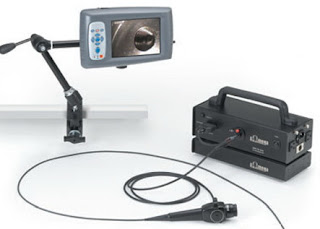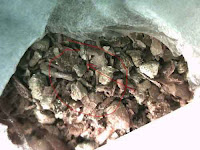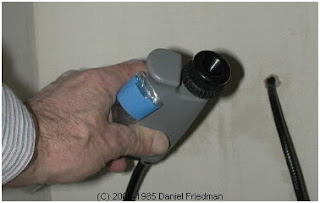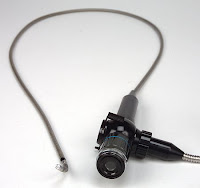Source: The Engineer Online
Electrical engineers at Rice University have demonstrated what they say is the world's first endoscope for terahertz imaging.
The research, which appears in the November 18 issue of the journal Nature, presents the emerging terahertz sensing industry with a unique new technology for transporting terahertz waves from a source and directing them at a particular target of interest.
"Our wave guide opens up a whole new class of capabilities because it offers a way to get terahertz energy into places it could never reach before," said lead researcher Daniel Mittleman, associate professor of electrical and computer engineering. "Wave guide technology frees you to look around corners and get into tight places."
Metals and other electrical conductors are opaque to T-rays, but they can penetrate plastic, vinyl, paper, dry timber and glass like X-rays. Unlike X-rays, T-rays are not hazardous radiation, and in some cases T-wave sensors can reveal not only the shape of a hidden object but also its chemical composition.
T-rays lie between microwaves, whose wavelengths measure from centimeters to millimeters, and light, with wavelengths measured in nanometers. The gap between - the so-called terahertz gap - contains wavelengths from 30 to 3000 microns, or 100 GHz to 10 THz when measured in frequency. The terahertz gap has been called the "final frontier" of the electromagnetic spectrum because there's never been an easy or cheap way to either generate or measure T-rays, something that's only begun to change with the advent of new technology in the past decade.
The development of "wave guides" is a key element in the technical maturation of T-ray technology. Wave guides - like fibre optic cables for lasers and coaxial cables for microwaves - allow energy to be moved and directed where it's needed. This is particularly useful if the beam generator is bulky or temperamental.
Both fibre optic cables and coaxial cables work by confining the energy of the beam in a small space, causing it to propagate down the cable.
But coaxial cables aren't good guides for T-waves because the metal sheath absorbs T-wave energy very quickly, and fibre optics don't transmit T-waves. By blending some aspects of both these technologies, Mittleman's team devised a system to guide T-waves in and out of a confined space.
Mittleman and his student, Kanglin Wang, stumbled upon the idea for the wave guide when they noticed T-waves were moving down a wire during an experiment on a new form of terahertz microscopy. In follow-up experiments, they found they could move T-waves along a bare wire, direct those waves onto a surface, catch the reflected waves on another wire, carry those reflected waves back to a receiver and analyze the return waves to reveal information about the surface the original wave was shined upon.
"There are lots of places where T-waves would be handy but where they're difficult to use today," said Mittleman. "Free-space beams are notoriously temperamental - a shortcoming that's kept them off of some factory floors - and our endoscope technology has the potential to change that."
To see more information about current products for industrial endoscopy go to Fiberscope.net


















